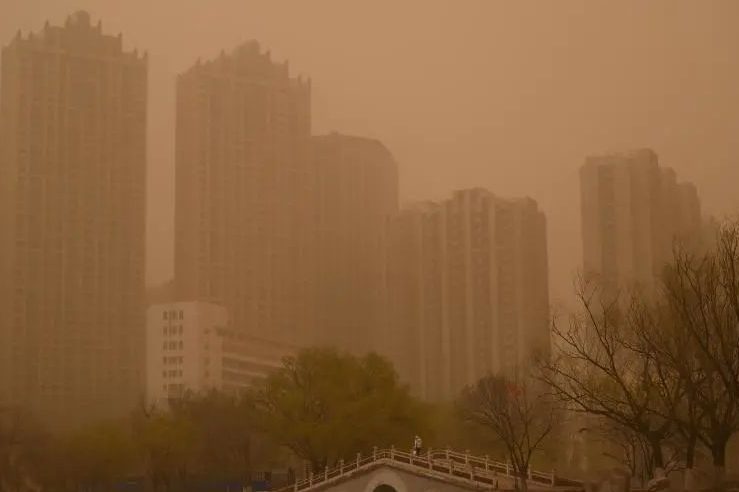Following the strongest sandstorm in nearly a decade in March this year, which swept through most cities in northern China and several East Asian countries, from April 14 to 16, sandstorms, dust and dust storms occurred again in central and western Inner Mongolia, eastern northwest China, northern North China, and western Northeast China from west to east, with short-term PM10 heavy pollution in some areas.
Since the beginning of this year, the world’s extreme celsius. The U.S. experienced extreme cold weather, with record low temperatures on record; the U.K. was hit by storms that triggered rare winter flooding; the New South Wales region, where the Australian city of Sydney is located, experienced its worst flooding in 60 years; and Japan experienced heavy snowfall, with some areas receiving more than 2 meters of snow. U.S. President’s Special Envoy for Climate John Kerry visited Shanghai from 14 to 17 to also address climate issues.
Why are extreme weather events frequent? How should humans respond?
“There is no barrier between countries on climate issues.” Wang Shuxiao, a professor at Tsinghua University’s School of Environment, told China News Agency in a recent interview that the strong sandstorms that originated in Mongolia in March came by wind and reached an altitude of several kilometers, and that several meters of protective forest were unstoppable. This sand and dust weather is caused by the third Mongolian cyclone of the year moving eastward. The significant increase in sand and dust affecting China this spring is the result of abnormal weather patterns. It also vividly illustrates that extreme weather has no borders and that climate change is a common challenge for humanity.
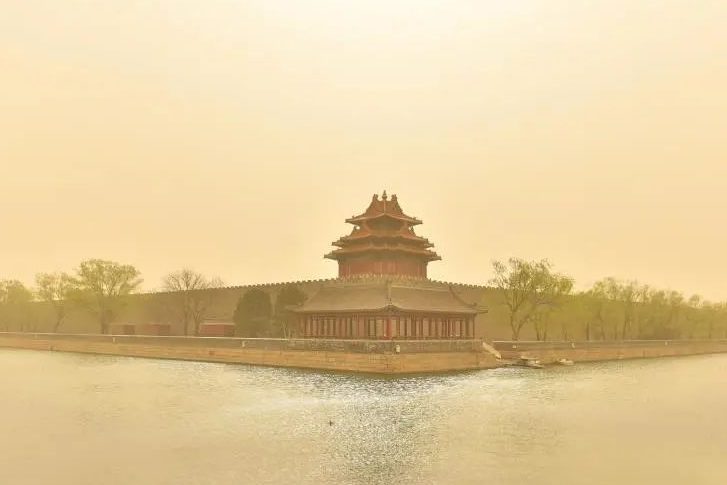
Why are extreme weather and climate events frequent?
In recent years, the sand and dust weather in China, especially in the north, has improved significantly, thanks to intensive afforestation and sand control. Wang Shuxiao said that in the process of strong sand and dust transmission, China’s 10 million hectares of protective forest played a role, so that sandstorms through China’s once sand source, did not further increase the intensity.
Some analysts point out that in recent years, global temperatures have continued to rise, breaking record highs, while high-latitudes are warming more than low-latitudes on average. This climate change trend may lead to an increase in the frequency of strong sand and dust weather.
Extreme weather such as extreme weather, high temperature heat wave, flood drought and so on pose more serious threats than the dust that whizzes through. When the first Climate Adaptation Summit was held in Amsterdam, the Netherlands, in early 2021, a data showed that extreme weather disasters cost the global economy $2.56 trillion this century, with some 480,000 people dying from extreme weather-related natural disasters over the past 20 years.
What are the reasons for the frequency of extreme weather? In some cases, global warming can make some types of extreme weather more frequent or intense, Wang said. In addition, daily and seasonal weather patterns, as well as natural weather patterns, can affect when and where extreme weather occurs.
Data released earlier this year by the World Meteorological Organization (WMO) showed that the average global temperature in 2020 was 1.2 degrees Celsius above the 1850-1900 level, one of the three warmest years on record.
“Climate change brings two facts: global warming and extreme weather.” Zhou Bing, chief climate expert at the National Climate Center of the China Meteorological Administration, said continued greenhouse gas emissions will lead to further warming and long-term changes in all components of the climate system, increasing the likelihood of serious, widespread and irreversible impacts on people and ecosystems.
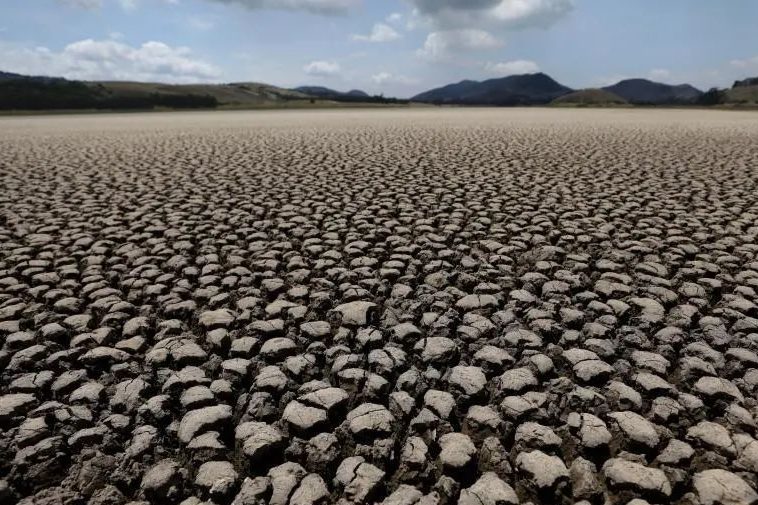
Is the era of Fog Orphans over?
“In 1990, the United Nations Intergovernmental Panel on Climate Change (IPCC) published its first assessment, which confirmed for the first time the scientific basis for the link between meteorological disasters and climate change.” Zhou said the report believes that more than half of global warming since the 1950s has been caused by human activity and prompted the U.N. General Assembly to make a decision to develop the United Nations Framework Convention on Climate Change (UNFCCC).
However, many others are questioning the theory of global warming, leading countries to make climate policy at both ends of the spectrum. U.S. President Donald Trump has been skeptical of climate science throughout his presidency, calling global climate change a “scam” and announcing his withdrawal from the Paris Agreement in June 2017 on the grounds that it “puts an unfair economic burden on the United States.”
‘There is no denying that there have been warmer periods and higher surface temperatures in history, but the concentrations of greenhouse gases such as carbon dioxide, methane and nitrous oxide in the atmosphere are now higher than at any time in history, ‘ Mr. Wang said.
Measurements by the Monaroa Observatory in Hawaii in May 2019 showed that co2 concentrations had exceeded 415.26 ppm by then, an increase of about 48% over the global average before the Industrial Revolution.
During the Industrial Revolution, coal was widely used in industrial production and daily life, and hundreds of thousands of chimneys and steam engines released large amounts of soot and sulfur dioxide, but the smoke was widely seen as a symbol of progress and prosperity.
“The night was dark and foggy. The lights in the shops were barely worn by the increasingly thick fog, and the streets and houses were all wrapped in hazy mud. “The famous British writer Charles Dickens created the realistic novel “Fog Orphans” in 1838 with fog capital London as the background, so that the image of “fog capital” is rooted in people’s hearts.
Driven by the industrial revolution, Britain became the world’s superpower, and western capitalist countries ushered in rapid development. But under the prosperity, air pollution, exploitation and oppression, poverty and so on followed.
In January 1930, the Maas Valley smog event in Belgium was the first air pollution tragedy on record in the 20th century. Photochemical smog events in Los Angeles in the early 1940s continued for decades. Thousands of people were killed in a five-day toxic fog incident in London in December 1952. Germany, France, Japan and other countries in the last century have also faced the threat of pollution.
To this end, Belgium introduced the Anti-Air Pollution Act in the wake of the Maas Valley smog incident, while optimizing development methods and encouraging green transport. The U.S. federal government enacted the Air Pollution Control Act, the Clean Air Act and the Air Quality Act in 1955, 1963, and 1967, and it was not until 2007 that the Los Angeles area’s air met clean standards. Britain enacted the Clean Air Act in 1956 and it took 30 years to remove the London “fog capital” hat.
“Air pollution has been largely addressed, but the long-term cumulative effects of greenhouse gases continue to increase. This is also one of the historical reasons why there are obvious differences between developed and developing countries in the distribution of emission reduction responsibilities. Zhou Bing said that mitigating greenhouse gas emissions is an important measure to combat climate change, developed countries have historical greenhouse gas emissions and per capita emissions are much higher than developing countries, but developing and least developed countries are relatively affected by global climate change, the ability to adapt to climate change is also weaker. In addition, differences in areas such as financial assistance and technology transfer pose challenges to global governance.
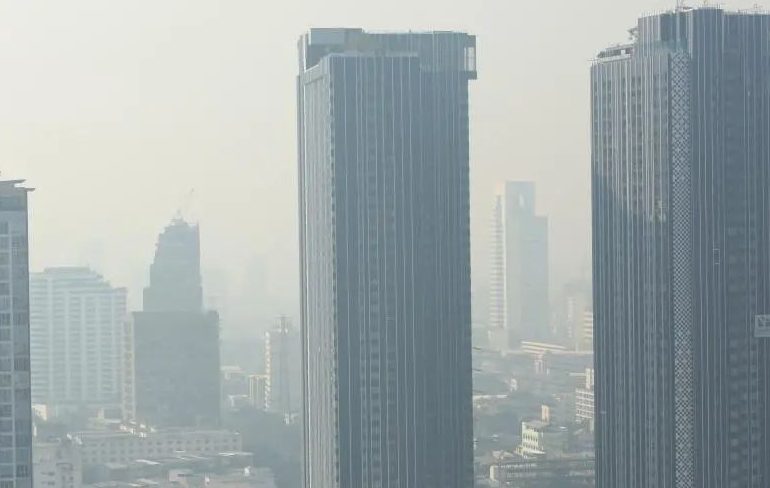
How to bridge differences and cool the planet?
Since the 1980s, climate change has gradually become a comprehensive issue covering global governance, diplomacy, environmental protection, economic development and other fields. Humans are also becoming increasingly alert to the importance of the Earth’s community of life and the urgency of addressing climate change.
“The international community has gone through a long time, from a scientific understanding of climate change to the establishment of a global system to address climate change.” Zhou Bing stressed that extreme weather is not only affecting a certain region, a certain group of people, but has a global or regional linkage, leading to the launch of the whole body to produce unpredictable consequences of the butterfly effect.
Zhou Bing further introduced that from the signing of the United Nations Framework Convention on Climate Change by many countries in 1992, to the key stage of full implementation of the Paris Agreement, international climate governance has gradually moved from the principle of “common but differentiated responsibilities” to “national self-contribution”, seeking to bridge differences through institutional design.
China and the United States are the world’s two largest economies and the world’s top emitters of greenhouse gases. Zhou Stressed That In International Climate Governance, The Role And Responsibilities Of Major Powers Have Become More Prominent.
According to statistics, during the 13th Five-Year Plan period, China’s carbon dioxide emissions per unit of GDP (GROSS DOMESTIC PRODUCT) fell by 18.2%, and the country’s ultra-low emissions of coal units reached 890 million kilowatts, accounting for 86% of the total installed capacity of coal power. China has built the world’s largest ultra-low emission clean coal power supply system, photovoltaic, wind power installed capacity, power generation are ranked first in the world, the country’s clean energy accounted for 23.4% of energy consumption.
Meanwhile, at the general debate of the 75th session of the United Nations General Assembly in September 2020, China first proposed that carbon dioxide emissions should peak by 2030 and strive to achieve carbon neutrality by 2060;
U.S. President Joe Biden signed a series of executive orders at the White House in his first week in office announcing a series of policy initiatives to address climate change. On 19 February, the United States announced its formal rejoining of the Paris Agreement. The White House has said in a statement that it will host a leaders’ climate summit this month. There are signs that the Us is also “returning” from ignoring climate change and abolishing it.
The Chief Executive Officer of the Energy Foundation and President of China believes that addressing climate change is one of the important areas of cooperation between China and the United States. From 14 to 17, during the visit of U.S. President’s Special Envoy for Climate Affairs John Kerry to China, Chinese Special Envoy for Climate Change Xie Zhenhua held talks with him in Shanghai to exchange views on China-U.S. climate change cooperation and the 26th Conference of the Parties to the United Nations Framework Convention on Climate Change.
“During his tenure as Secretary of State, Kerry participated with Xie Zhenhua in the development of the Paris Agreement and promoted the publication of the Joint Statement on Climate Change between China and the United States. For now, the two men are re-talking, or injecting positives and certainty into China and the U.S. to address climate change together. “I don’t know, ” he said.
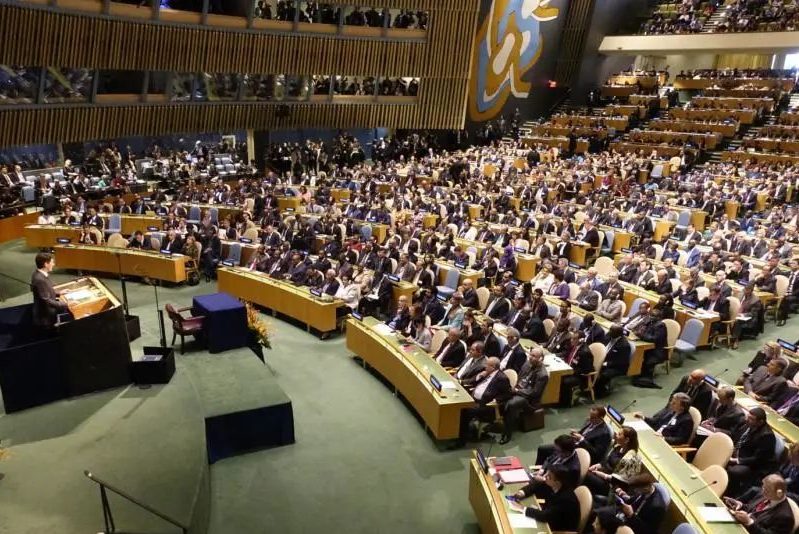
But cooperation can advance global climate governance
Heaven does not say and does four things, the earth does not say a hundred things. Back in history, Chinese and Western civilizations have a lot of records about climate and extreme weather. For thousands of years, mankind has faced the invasion of various disasters, and the struggle and thinking of disasters has never stopped.
Wang Xuebin, a professor in the Department of Cultural History and Research at the Cpc Central Committee’s Party School, said that in primitive societies where humans could not make a scientific and rational explanation of natural phenomena, the phenomenon of wind and rain, lightning, floods and so on was often deified, and the legend of the great flood as the theme and background was one of the most widespread types of myths.
The ancient Chinese book “The Book of Mountains and Seas” details the flooding during the period of the Three Emperors and the Five Emperors, and Otsuka led the people to fight the flood for 13 years, and finally won the legend of victory. In the West, the Causes, Processes and Outcomes of the Great Flood, as well as the method of building Noah’s Ark and the time and place of final stop, are clearly documented in the Old Testament. In addition, in The Gilgamesh Epic in Babylon, Cuba, the Sanskrit Book of ancient India, the Holy Book of Maya, as well as the Mexican and Greek ancient books have also appeared in the “flood extinction” of the relevant legends.
Wang Xuebin said that china’s ancient flood myth and the vast majority of the world’s national flood myth belongs to different types. In the face of natural disasters, people of different nationalities have different coping styles, but this reflects the diversity of human civilization. China’s response is summed up in one word as “cure”.
Zhou Bing said that before the invention of meteorological observation instruments, human perception of meteorological disasters only stayed in the “eat by the sky” stage. With the development of meteorological science, human beings gradually develop the understanding of climate and extreme weather phenomena with the times.
In fact, humanity has not healed the universal fear of natural disasters, but the object has changed from the legendary “flood extinction” to the current frequency of extreme weather and climate events. In the face of climate change, all countries should jump out of short-term self-interest, examine the status quo with long-term vision and overall sense, find coping strategies, and promote problem solving in cooperation.
Coexistence, destiny and common. Zhou stressed that climate change is a common problem for all mankind and requires the joint efforts of all countries around the world. The concept of human destiny community puts forward the concept of global governance of common consultation, co-construction and sharing, which can help global climate governance to open a new course.


